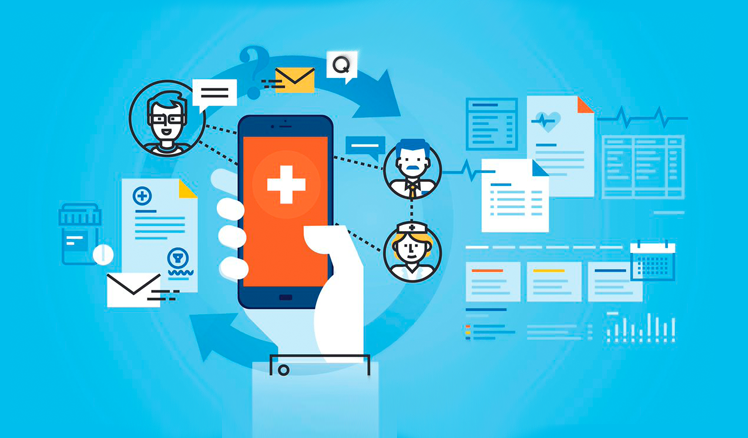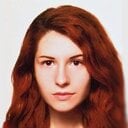ScienceSoft’s Val Kireitchik: Technology is here and waiting for healthcare to make a move
In 2005, ScienceSoft first tapped into the healthcare IT market. About 10 years later, we stopped just being in healthcare IT and started advancing in it. Today, in 2017, ScienceSoft’s Marketing Director Val Kireitchik talks about the past, present and future of everything healthcare for the company – and him personally.

Healthcare IT: Plans, hopes and expectations
Can you tell why healthcare IT was chosen as one of the main focuses in ScienceSoft’s business strategy?
Sure! Finally, that was a pragmatic and truly marketing decision. The US economy structure explicitly advised us to consider healthcare that accounted for 17% of GDP at the time. Also, this is the area with a stable growth, where new methodologies, systems and approaches constantly arise and create a huge market. However, the market’s not so easy to penetrate, especially for smaller companies, which is good for us. On top of that, we already had relevant experience and completed projects to show off our competences and use them to deliver solutions. All these facts came together, and we saw the potential.
What makes us a good fit for the customers’ needs?
The biggest value I see is that we naturally bring in a customer-oriented approach in healthcare, which needs it badly. I’m talking not only about the attitude here but about technologies such as healthcare CRM, patient data analytics, mobile apps for patients and other patient engagement components.
We did a lot of work to conceptually adapt technology to healthcare requirements and make it work for both patients and providers in the way they needed it. Some vendors create the system to perform a certain task and forget about the end users who need convenience and intuitive navigation to ease up their routine instead of hindering workflows completely. We choose the other path, making convenience and customer-oriented mode our top priority.
What is your take on the healthcare IT trends for 2017?
Well, the security trend is one of the most predictable and stable ones, I would say. It stayed and will stay among hot topics. No doubt. Especially with HHS's security enforcement activities, because it takes severe measures to keep providers care about data breaches.
Overall, I don't expect any substantial disruptions this year. There are a lot of things I would personally want to happen, but healthcare can be slow when it comes to progress.
For example, I believe that treating patients like customers is absolutely necessary for healthcare at this point, and it can prove more useful than any new regulation or reimbursement approach. But it is unlikely to happen this or next year. The current industry ambiance doesn’t stimulate providers to get more customer-oriented. Even the ‘free market’ mood that we could expect from Trump’s administration is doubtfully an industry-changer.
But we should first look at care delivery itself as a trend and ask how technology can help to improve and make it cheaper at the same time. This question should be perceived as an operational goal, not a dream. In other industries, like automotive, they constantly answer this question with the dramatic improvement in quality along with cost reduction.
It’s interesting, we already have the technology to achieve the balance in care and costs. Telehealth in the shape of patient portals and healthcare apps is one example, because it makes healthcare cheaper and more accessible.
We need to harness telehealth for treating patients without severe diseases or conditions requiring constant professional care – like patients with chronic diseases, lifestyle conditions and common colds. Of course, personal office visits will stay necessary for interventions and procedures, but most of the routine, say, follow-ups on the treatment progress, can and should be automated.
If the market and regulations will motivate the big players to invest in telehealth solutions across the country, it could take only 3 to 5 years to change the industry dramatically in this direction. All technology components are here and waiting, and a company like ScienceSoft can deliver such a provider-driven, large-scale solution in about a year.
A bit on mHealth. Do you have any favorite patient apps?
No, and the reason is that I believe almost everything we have now are just toys. There should be a provider on the other side. We must not try to replace healthcare with IT, we must support it.
Otherwise, these apps undermine the idea of using technology for care. When patients want to use technology for their health, they install something which isn’t backed by providers, so it is practically out of the scope of authorized healthcare technologies. But providers can’t offer the alternative, so patients have to settle on what they can install. Accordingly, everybody starts thinking that this is how technology works in healthcare. That’s a double mistake.
Please name ScienceSoft’s three hallmark projects in healthcare IT and tell why they are your pick.
The first one is the allergy portal for primary care physicians. The portal allows PCPs to conveniently manage their allergy patients, order allergy treatments, process claims and invoices. For me, this project is a hallmark because it is a sign of the providers’ emerging collaboration on care delivery elements.
The second project is our system for automation of oncology treatment and TPN manufacturing. The solution allows covering generic and non-generic short-living chemotherapy drugs and TPN production, stock control, client information and financial transactions (direct sales). I picked the project because we tackled the challenge of creating a direct channel between patients and providers to make sure that the short-term oncology treatment will get to the patient on time.
The third one, I guess, is the health monitoring module in our solution for assisted living. It allows tracking patients’ health status by aggregating vitals and test results plus automated alerts to notify the personnel about negative changes. It empowers providers with remote patient monitoring and allows them to help patients timely.
So tightly connected to healthcare now, maybe you have some healthy living tips to share?
Yes, I have the one and only tip. Monitor your health. That’s both the simplest and hardest thing I can come up with, because we all don’t like doctors and hospitals, so we try to avoid them as long as possible. But it’s still better to maintain than fix, so just try to be on the preventive side.
We talked about how ScienceSoft started its healthcare IT crusade. What about our plans for continuing it?
We will move further in the direction we would like to see healthcare, and we will respond to market demands. I’m talking customer-oriented solutions here, specifically medical CRM, mobile apps, image analysis, data analytics and augmented reality. We also plan to cooperate with clinical researchers in image analysis and research data analysis.
And the last question. How do you evaluate your lifestyle on the scale from 0 to 10?
Oh, now that’s mean. Why would you ask that? Okay, let’s count. In my opinion, lifestyle is made up of 4 main components – physical activity, sleep, nutrition and mood. I would give myself a 4 for physical activity, that’s the area I need changes in right now! I don’t think I sleep enough, so 5. Nutrition and mood components get proud 8s. So, on the scale from zero to ten, I would get a humble six. Thank you for making me reflect on my life and decisions I made, that’s refreshing.
Thank you.
Tongue in cheek: Val’s personal profile
The worst mistake in my career was…
So big that I will remember it till my last day. I initiated an internal startup within the IT consulting and software development company. It was a product to allow our clients creating any system for their needs (such as CRM, HRMS, billing and so on) without having to code it. And it failed because we didn't invest enough efforts into marketing research. The reason was me being more into active sales than marketing at that time.
I believe that with moderate efforts put into proper market analysis, we could succeed. We would narrow our ambitions down to a particular niche instead of trying to cover the whole market.
On the bright side, that was a kick that turned me into a “marketing believer.” I still listen to my intuition, but now I work with facts and trust numbers better than the gut feeling.
My biggest dream is…
…actually quite banal. I want to be happy, which means an alliance of health and love. Such a simple formula, but when I made it my goal, my life had changed.
What’s your favorite book of all times?
You know, I’m not sure I have THE book. But I can name Steven Pressfield’s The War of Art and Stephen Covey’s 7 Habits of Highly Effective People among my top picks.
What’s your favorite flavor of chocolate?
Dark chocolate with almonds and raisins. I also like chocolate with orange peel.
Are you a dog or cat person?
Oh, neither. I am a people person. Sure, people also need food and attention, but they have a huge advantage – you can talk to them.
Let’s get weird here. If you would happen to be a kitchen utensil, would you be a knife, a spoon or a fork?
Okay, my first pick was a knife. All boys, both big and little, are a bit crazy about knives. But, after some thinking, I prefer to be a spoon, because it’s universal – you can eat anything with it. It is also symbolic, because you can take something with it and deliver the contents, instead of destroying things around like knives do.
What song best describes your work ethic?
ABBA’s Thank You for the Music is one that comes to my mind. It describes the inner balance you get from doing something very natural for you. And doing this fills you up with energy and love you can’t help but share.


